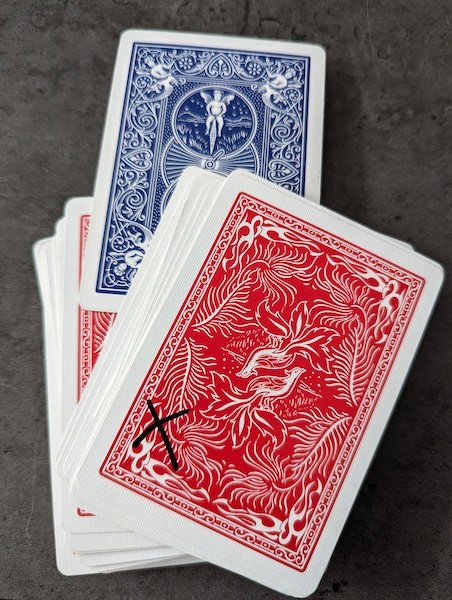The Damsel Cull Force - Version 3
/Since the post I wrote on it last month, I’ve been using the Damsel Cull Force Version 2 very regularly, and it’s flown by everyone. Including some people who should know better.
Here is a third version of that force as described by Tomas Blomberg. This one doesn’t use equivoque (as Version 2 does) but it still allows the spectator to make their decision if they want the card above or below the joker once the deck is out of your hands.
Here is Tomas’ original video to me, and I’ll add a couple of thoughts I had while playing around with it after.
If the spectator says they want the card below the joker (or whatever insert card you use), this is incredibly clean. You ask them to gather the cards up and have them spread to the card below the joker. Of course, you also note the card above the joker, so they see what they “could have had.”
If they say they want the card above the joker, it can get a little finicky. You’ll want to play around with it to see the best way to handle it. Here is what I settled on…
You spread the cards, cull the force card, and set the deck down in this configuration. (This is your view.)
Now you have them place their finger down on the point where the X is in the picture above.
“I’m not going to touch the deck. I want you to hold everything in place, so nothing can change from the position you chose, while I give you one final choice. Do you want the card above the joker or below it? Whichever you choose, that’s the one I spray-painted on your garage door.” [Or whatever your final reveal is.]
If they say below, you have them gather up the cards and spread to the one below the joker.
If they say above, you pluck out the joker. Their finger—which was ostensibly placed there as a safety measure, so you couldn’t change anything—actually holds everything in place, so you can remove the joker cleanly. You then tell them to look at the card on the face of the packet that was above the joker, and you show them the other option that was below.
The whole purpose of all of these options (and the “Damsel” forces I’ve described in previous books) is to emphasize the free selection with an actual free choice. Not every trick with a force will benefit from this moment, and not every performing situation will be conducive to slowing down the moment of choice like that. But whenever possible, I choose to include techniques like this where the freedom of their choice feels unequivocable.
Thanks to Tomas for sharing this variation.

